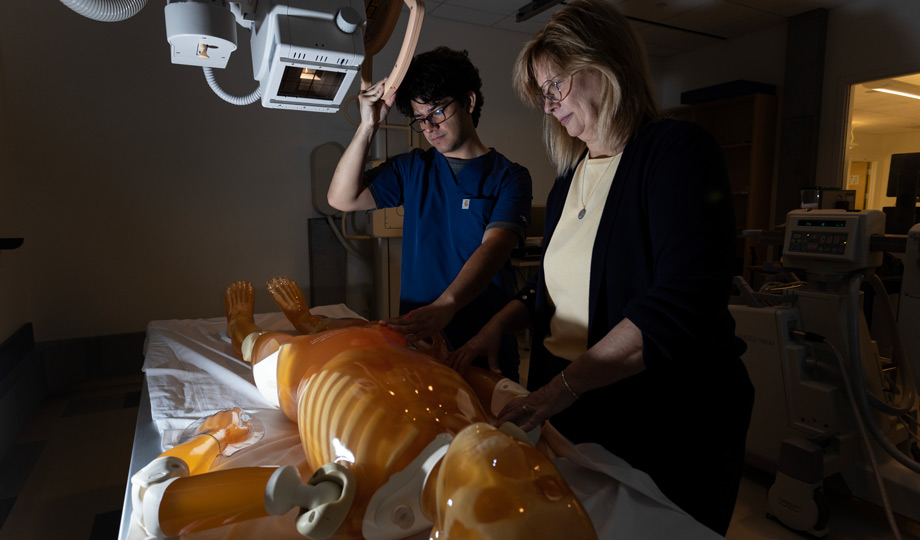By: Cat Pastoor

College of DuPage Radiography students now have access to cutting edge equipment that will help them learn to capture images more efficiently and accurately. The new acquisitions include four X-ray mannequins, called phantoms, a portable X-ray machine and a C-arm.
The new X-ray mannequins more accurately replicate tissue density, something Radiography Assistant Professor Sue Dumford said is an important component in making decisions about the process of imaging a patient.
“As a technologist,I have to determine how much radiation I need and how much energy in my X-ray beam to get a diagnostic image,” she said. “And that depends on the patient’s size, their tissue density, anatomy and pathology, so by having a mannequin, or a phantom, here that actually replicates human tissue density, my students can get a really good idea of the amount of radiation and energy their subject will require.”
Learn More About the DMIR Program
With these resources, students are able to experiment with the phantoms before going to their clinical sites and applying their knowledge of anatomy and technique to assist with diagnoses.Students may also practice capturing X-ray images using a C-arm X-ray machine, which quickly captures high-resolution images in real time and allows for a high degree of flexibility in its positioning.
“The C-arm is very maneuverable, and it allows for angles in several directions,” Dumford said. “The important thing about all of this equipment is that it’s digital, so the images are available immediately. As soon as I take my image in surgery, it pops up, and the surgeon can see it. They can take measurements, they can spin it, they can do whatever they want with it.”
Additionally, the new portable X-ray machine provides immediately available digital images. Such equipment is often used in hospitals in “code blue” emergency situations where a patient’s lungs and heart may have stopped working. With the portable machine, technicians help attending physicians see what may be happening with the lungs.
Dumford recalls a time she attended a code blue on a child patient who was not stabilizing, even with CPR and the insertion of a breathing tube. Once she got an image of the patient’s lungs on the portable X-ray machine, the doctors saw that the tube was going in too far. Once the adjustment was made, the patient stabilized immediately.
“[The machine] is so incredibly important in the code blue team,” she said. “As soon as they call in trauma, we’re there with our portable and ready to go and do chest X-rays or whatever the emergency room doctor needs to see at that moment.”
Access to this technology on campus allows students a more seamless transition from using the equipment in the classroom to a clinical setting, where the digital images will support health care professionals in helping patients faster than they could have with the now-obsolete film technology.